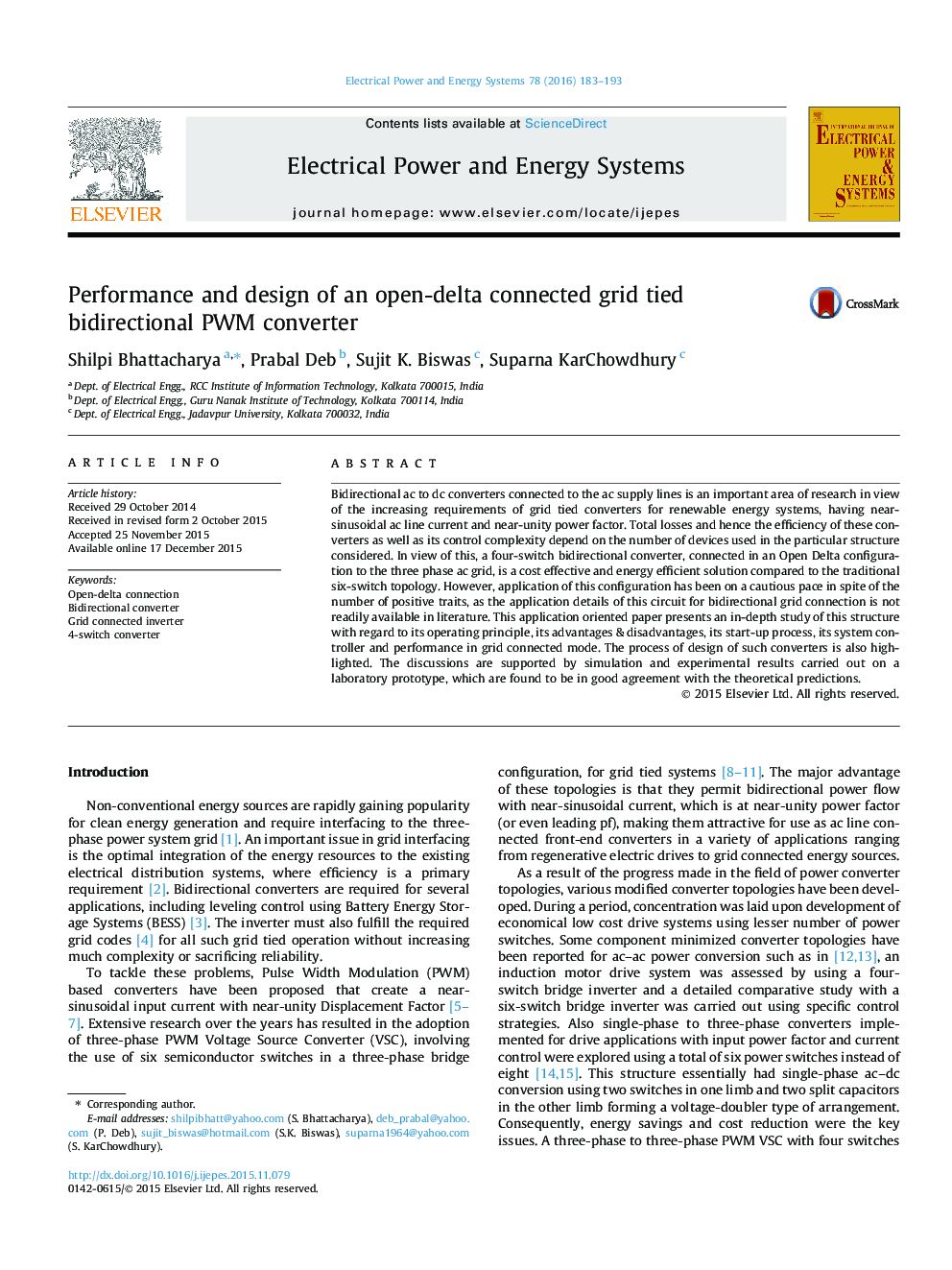| Article ID | Journal | Published Year | Pages | File Type |
|---|---|---|---|---|
| 398422 | International Journal of Electrical Power & Energy Systems | 2016 | 11 Pages |
•Non-conventional energy sources are grid-tied via converters with optimum performance.•Four-switch PWM bidirectional converter is a viable contender but not widely applied.•Operating principles of this converter, features, design features, are discussed.•Proposed grid tied bidirectional converter simulated to verify system performance.•Experiments carried out on a laboratory prototype to support the simulated results.
Bidirectional ac to dc converters connected to the ac supply lines is an important area of research in view of the increasing requirements of grid tied converters for renewable energy systems, having near-sinusoidal ac line current and near-unity power factor. Total losses and hence the efficiency of these converters as well as its control complexity depend on the number of devices used in the particular structure considered. In view of this, a four-switch bidirectional converter, connected in an Open Delta configuration to the three phase ac grid, is a cost effective and energy efficient solution compared to the traditional six-switch topology. However, application of this configuration has been on a cautious pace in spite of the number of positive traits, as the application details of this circuit for bidirectional grid connection is not readily available in literature. This application oriented paper presents an in-depth study of this structure with regard to its operating principle, its advantages & disadvantages, its start-up process, its system controller and performance in grid connected mode. The process of design of such converters is also highlighted. The discussions are supported by simulation and experimental results carried out on a laboratory prototype, which are found to be in good agreement with the theoretical predictions.
